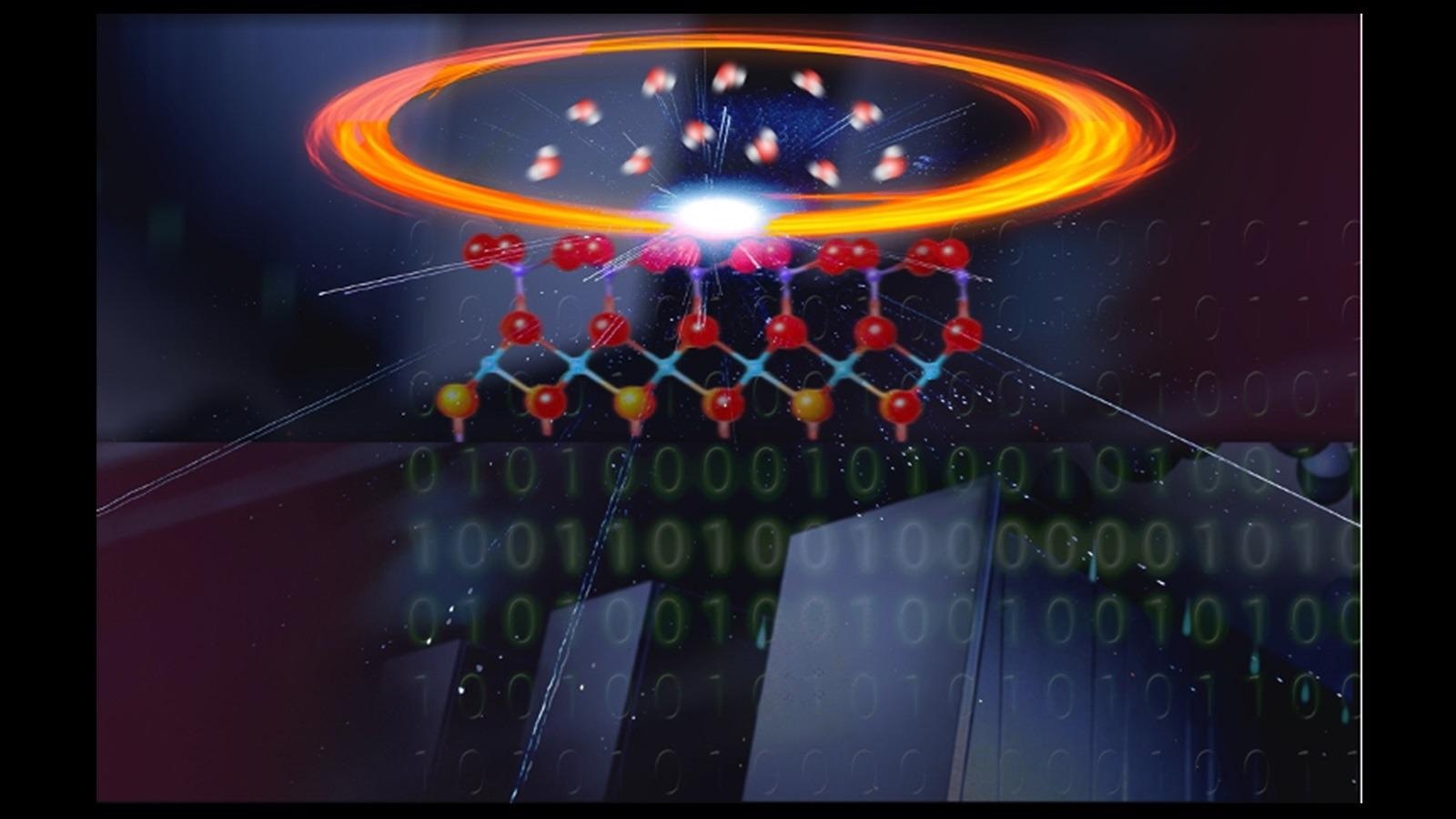Jan 20 2021
Computer simulations are known to have immense potential to speed up the molecular design of green energy technologies, for example, novel systems meant for solar energy usage and electrical energy storage, and also carbon dioxide capture from the surroundings.
 Pictorial representation of joint experimental and computational study of materials. The study utilized the Advanced Photon Source (upper panel) and Argonne Leadership Computing Facility (lower panel). The team addressed the atomistic structure of interfaces, which are ubiquitous in materials. Image Credit: Emmanuel Gygi, University of California, San Diego.
Pictorial representation of joint experimental and computational study of materials. The study utilized the Advanced Photon Source (upper panel) and Argonne Leadership Computing Facility (lower panel). The team addressed the atomistic structure of interfaces, which are ubiquitous in materials. Image Credit: Emmanuel Gygi, University of California, San Diego.
But in such computer simulations, their predictive power relies on a method to validate that these simulations indeed explain the real world.
However, this confirmation is not an easy task because several assumptions also enter the setup of these computer simulations. Therefore, the computer simulations should be meticulously checked with the help of a suitable “validation protocol” that involves experimental measurements.
To deal with this problem, a research team from the Argonne National Laboratory of the U.S. Department of Energy (DOE), the University of Chicago, and the University of California, Davis, has designed a revolutionary validation procedure to simulate the atomic structure of the interface between liquid water and a solid (a metal oxide).
The researchers were headed by Giulia Galli, a theorist with a joint appointment at the Argonne National Laboratory and the University of Chicago, and by Paul Fenter, an experimentalist from the Argonne National Laboratory.
“We focused on a solid/liquid interface because interfaces are ubiquitous in materials, and those between oxides and water are key in many energy applications,” Galli stated.
To date, most validation protocols have been designed for bulk materials, ignoring interfaces. We felt that the atomic-scale structure of surfaces and interfaces in realistic environments would present a particularly sensitive, and therefore challenging, validation approach.
Paul Fenter, Experimentalist, Argonne National Laboratory
The validation protocol developed by the team employs high-resolution X-ray reflectivity (XR) measurements as the experimental benchmark of the procedure.
The researchers first compared the XR measurements for a water/aluminum oxide interface, which was performed at beamline 33-ID-D at the Advanced Photon Source (APS) of the Argonne National Laboratory, and then achieved results by performing high-performance computer simulations at the Argonne Leadership Computing Facility (ALCF). The ALCF and APS are both DOE Office of Science User Facilities.
These measurements detect the reflection of very high energy X-ray beams from an oxide/water interface.
Zhan Zhang, Physicist, X-Ray Science Division, Argonne National Laboratory
At the beam energies produced at the APS, the wavelengths of the X-ray are almost the same as that of interatomic distances. This enabled the team to instantly analyze the molecular-scale structure of the interface.
“This makes XR an ideal probe to obtain experimental results directly comparable to simulations,” stated Katherine Harmon, the first author of the study, a graduate student from Northwestern University, and also a visiting student from the Argonne National Laboratory.
At the ALCF, the researchers used the Qbox code to run the simulations. This code has been developed to analyze the limited temperature properties of molecules and materials using simulations built on quantum mechanics.
“We were able to test several approximations of the theory,” stated Francois Gygi from the University of California, Davis, and also a part of the research team and lead developer of the Qbox code. The researchers compared the quantified XR intensities with those estimated from many simulated structures.
Besides this, the team also explored how X-rays dispersed from the electrons in varied parts of the specimen would interfere to create the experimentally observed signal.
But the researchers’ attempt turned out to be harder than expected.
Admittedly, it was a bit of a trial and error at the beginning when we were trying to understand the right geometry to adopt and the right theory that would give us accurate results. However, our back and forth between theory and experiment paid off, and we were able to set up a robust validation protocol that can now be deployed for other interfaces as well.
Maria Chan, Study Co-Author and Scientist, Center for Nanoscale Materials, Argonne National Laboratory
The Center for Nanoscale Materials is also a DOE Office of Science User Facility.
According to Kendra Letchworth-Weave, an assistant professor at James Madison University, “The validation protocol helped quantify the strengths and weaknesses of the simulations, providing a pathway toward building more accurate models of solid/liquid interfaces in the future.”
Letchworth-Weave has designed the software to estimate XR signals from simulations while doing a postdoctoral fellowship at the Argonne National Laboratory.
Furthermore, the simulations provide a better understanding of the XR measurements themselves. They particularly demonstrated that the information is equally sensitive to the atomic positions and the electron distribution that surrounds every atom in complex yet subtle ways. Such an understanding will prove useful in upcoming experiments on liquid/oxide interfaces.
The interdisciplinary group is part of the Midwest Integrated Center for Computational Materials, which is headquartered at the Argonne National Laboratory—a computational materials science center managed by DOE.
The study was funded by the DOE Office of Basic Energy Sciences, a Laboratory Directed Research and Development Award, and the Department of Defense.
ALCF computing time was awarded via DOE’s ASCR Leadership Computing Challenge.
Journal Reference:
Harmon, K. J., et al. (2020) Validating first-principles molecular dynamics calculations of oxide/water interfaces with x-ray reflectivity data. Physical Review Materials. doi.org/10.1103/PhysRevMaterials.4.113805.